The satiety hormone cholecystokinin gates reproduction in fish by controlling gonadotropin secretion
- PMID: 39717899
- PMCID: PMC11668526
- DOI: 10.7554/eLife.96344
The satiety hormone cholecystokinin gates reproduction in fish by controlling gonadotropin secretion
Abstract
Life histories of oviparous species dictate high metabolic investment in the process of gonadal development leading to ovulation. In vertebrates, these two distinct processes are controlled by the gonadotropins follicle-stimulating hormone (FSH) and luteinizing hormone (LH), respectively. While it was suggested that a common secretagogue, gonadotropin-releasing hormone (GnRH), oversees both functions, the generation of loss-of-function fish challenged this view. Here, we reveal that the satiety hormone cholecystokinin (CCK) is the primary regulator of this axis in zebrafish. We found that FSH cells express a CCK receptor, and our findings demonstrate that mutating this receptor results in a severe hindrance to ovarian development. Additionally, it causes a complete shutdown of both gonadotropins secretion. Using in-vivo and ex-vivo calcium imaging of gonadotrophs, we show that GnRH predominantly activates LH cells, whereas FSH cells respond to CCK stimulation, designating CCK as the bona fide FSH secretagogue. These findings indicate that the control of gametogenesis in fish was placed under different neural circuits, that are gated by CCK.
Keywords: CCK; fsh; neuroscience; pituitary; reproduction; zebrafish.
© 2024, Hollander-Cohen et al.
Conflict of interest statement
LH, OC, MS, TA, PF, OR, PM, MG, BL No competing interests declared
Figures
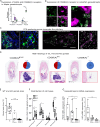
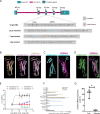


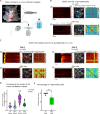
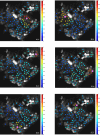



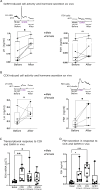

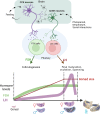
Update of
- doi: 10.1101/2023.06.18.545454
- doi: 10.7554/eLife.96344.1
- doi: 10.7554/eLife.96344.2
Similar articles
-
Identification of the FSH-RH as the other gonadotropin-releasing hormone.Nat Commun. 2024 Jun 27;15(1):5342. doi: 10.1038/s41467-024-49564-8. Nat Commun. 2024. PMID: 38937445 Free PMC article.
-
A New Bihormonal Model for the Brain Regulation of Gonadotropins in Teleosts.Neuroendocrinology. 2025;115(8):648-656. doi: 10.1159/000546403. Epub 2025 May 21. Neuroendocrinology. 2025. PMID: 40398401 Review.
-
Characterization of carp gonadotropins: Structure, annual profile, and carp and zebrafish pituitary topographic organization.Gen Comp Endocrinol. 2018 Aug 1;264:28-38. doi: 10.1016/j.ygcen.2017.11.022. Epub 2017 Nov 26. Gen Comp Endocrinol. 2018. PMID: 29183794
-
Novel peptides in ovarian follicular fluid: implications for contraceptive development.Res Front Fertil Regul. 1982 Sep;2(2):1-11. Res Front Fertil Regul. 1982. PMID: 12179632
-
Gonadotropins, their receptors, and the regulation of testicular functions in fish.Comp Biochem Physiol B Biochem Mol Biol. 2001 Jun;129(2-3):407-17. doi: 10.1016/s1096-4959(01)00339-6. Comp Biochem Physiol B Biochem Mol Biol. 2001. PMID: 11399475 Review.
Cited by
-
Cholecystokinin (CCK) Is a Mediator Between Nutritional Intake and Gonadal Development in Teleosts.Cells. 2025 Jan 8;14(2):78. doi: 10.3390/cells14020078. Cells. 2025. PMID: 39851506 Free PMC article.
-
GnRH-Gonadotropes Interactions Revealed by Pituitary Single-cell Transcriptomics in Zebrafish.Endocrinology. 2024 Oct 30;165(12):bqae151. doi: 10.1210/endocr/bqae151. Endocrinology. 2024. PMID: 39499852 Free PMC article.
References
-
- Anderson JL, Asche F, Garlock T, Chu J. Aquaculture: Its Role in the Future of Food. World Agricultural Resources and Food Security. Emerald Publishing Limited; 2017. - DOI
-
- Aroua S, Maugars G, Jeng SR, Chang CF, Weltzien FA, Rousseau K, Dufour S. Pituitary gonadotropins FSH and LH are oppositely regulated by the activin/follistatin system in a basal teleost, the eel. General and Comparative Endocrinology. 2012;175:82–91. doi: 10.1016/j.ygcen.2011.10.002. - DOI - PubMed
MeSH terms
Substances
Associated data
- Actions
Grants and funding
LinkOut - more resources
Full Text Sources
Molecular Biology Databases

